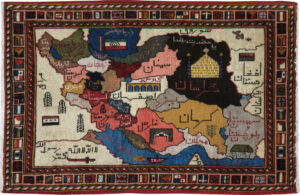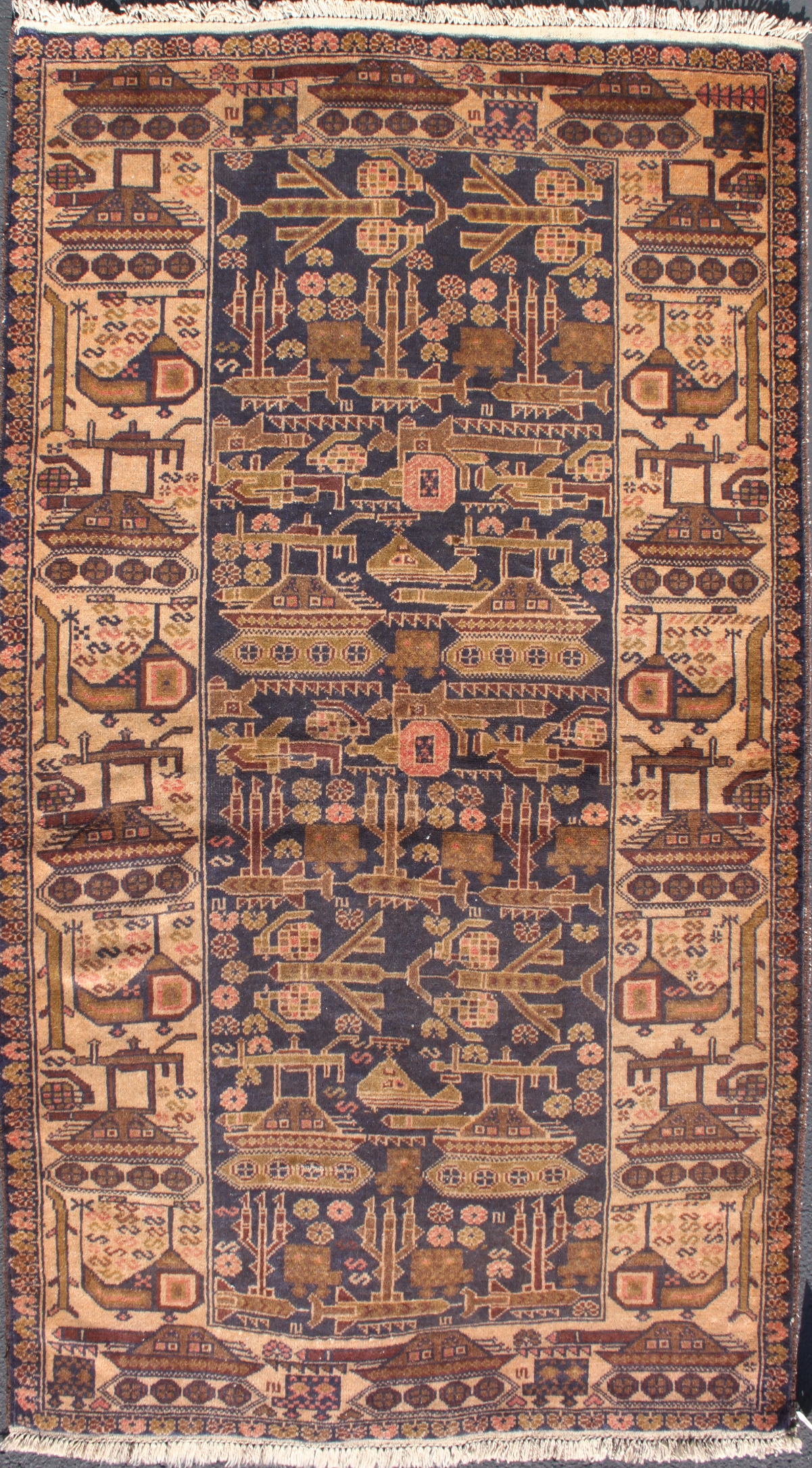Quartz wrote about my history with collecting Afghanistan war rugs and the rise in popularity of drone images. Check it out here. It includes the Red, White, and Blue Drone Rug, the Predator Drone Rug, Red Rug 13, Abstract WTC 9/11 Afghan War Rug #2, Bomber Helicopter Style War Rug, the Beautiful Afghan Province Map Rug, and the WTC rug all of which can be explored in detail on Warrug.com.
NPR and The World also did a couple write ups on the subject. It’s nice to see War Rugs getting some interest in the public sphere.

 The figures and motifs are pixelated and stylized. The different rows of weapons are separated by jagged lines. The border is made up of alternating tanks, rifles, and helicopters. The flowery guard stripe on the left side of the rug appears to be stretched compared to the stripe on the right. This rug can be found on
The figures and motifs are pixelated and stylized. The different rows of weapons are separated by jagged lines. The border is made up of alternating tanks, rifles, and helicopters. The flowery guard stripe on the left side of the rug appears to be stretched compared to the stripe on the right. This rug can be found on 